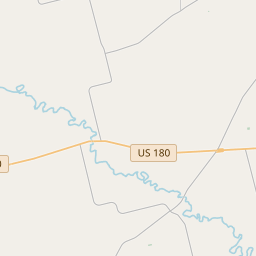Woods Chapel Cemetery
Historical marker location:






(1.5 miles southwest) Settlement of this area of Fisher County began in the early 1880s. A small frame building, erected near this site in 1883-1884, was used as a school and church. A cemetery was established and was in use by 1884. The church was named in honor of its first pastor, J. B. Woods. Among the first settlers here were Henry Clay Lyon (1815-1889) and his family. Lyon, a native of Tennessee, was a veteran of the Republic of Texas Army as well as the Confederate forces of the Civil War. Although Lyon is buried in the Woods Chapel Cemetery, a granite marker in his honor was placed in the Roby Cemetery at this site of the graves of his wife and children. Plans to reinter him next to his widow during the Texas Centennial of 1936 were never completed. The earliest marked grave in the Woods Chapel Cemetery is that of Sarah H. Lawrence (1881-1884), a granddaughter of Henry C. Lyon. Of the twenty-six marked graves here, thirteen are those of infants or small children. The graveyard also contains at least twenty-eight unmarked graves. An important part of Fisher County history, the cemetery is the site of an annual San Jacinto Day observance on April 21. (1988)
As one of the most visible programs of the Texas Historical Commission (THC), historical markers commemorate diverse topics in Texas history, including: the history and architecture of houses, commercial and public buildings, religious congregations, and military sites; events that changed the course of local and state history; and individuals who have made lasting contributions to the state, community organizations, and businesses.
The Battle of San Jacinto fought on April 21, 1836, was the decisive battle of the Texas Revolution, and led to the capture of Santa Anna and the end of the conflict.
The early settlers of Fisher County were primarily ranchers and farmers who were attracted to the fertile land and abundance of water sources, particularly the Colorado River. These pioneers faced many challenges, including severe weather conditions and conflicts with Native American tribes in the area. However, they persevered and gradually developed thriving communities, mainly centered around farming and ranching.
The arrival of the railroad in the late 1800s greatly enhanced the county's economic development. The railroad allowed for the transport of goods and improved access to markets, leading to the growth of towns such as Roby and Rotan. With the expansion of the rail network, Fisher County became an important transportation hub in the region.
In the 20th century, Fisher County faced some setbacks, including the effects of the Great Depression and a decline in population due to the mechanization of farming. However, the discovery of oil and gas reserves in the area in the 1940s provided a boost to the local economy. Today, Fisher County continues to rely on agriculture, oil and gas, and small businesses as its main economic drivers, while also preserving its historical heritage through museums and cultural events.
Fisher County Timeline
This timeline provides a condensed summary of the historical journey of Fisher County, Texas.
- 1870: Fisher County was established on February 1, 1876, and named after Samuel Rhoads Fisher, a signer of the Texas Declaration of Independence.
- 1880s: The first settlement in the area was established near the Clear Fork of the Brazos River.
- 1890s: The county experienced a population boom with the arrival of the Texas Central Railroad.
- 1911: The town of Roby was designated as the county seat of Fisher County.
- 1930s: Fisher County, like the rest of the country, was greatly affected by the Great Depression.
- 1940s: The discovery of oil and gas in the county led to economic growth and increased population.
- 1970s: The county faced economic challenges due to declining oil prices.
- 2000s: Fisher County continued to be primarily agricultural, with farming and ranching as the main economic activities.